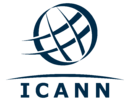Main Page: Difference between revisions
New article of the week - gTLD Auctions |
New article of the week- ccTLD |
||
| Line 20: | Line 20: | ||
<br /><div style="color: #FFF; background-color: #0d8323; padding: 5px 10px; border: 1px solid #466f81;"><big>Article of the Week</big></div><div style="padding: 10px;"> | <br /><div style="color: #FFF; background-color: #0d8323; padding: 5px 10px; border: 1px solid #466f81;"><big>Article of the Week</big></div><div style="padding: 10px;"> | ||
<big><b>[[ | <big><b>[[ccTLD]]</b></big> | ||
<br /> | <br /> | ||
Country Code Top-Level Domains ([[ccTLD]]s) are two-letter Internet top-level domains ([[TLD]]s) specifically designated for a particular country, sovereign state or autonomous territory for use to service their community. ccTLDs are derived from [[ISO]] 3166-1 alpha-2 country codes. | |||
The policies developed by [[ICANN]] are implemented by [[gTLD]] registry operators, ccTLD managers, root-nameserver operators and regional Internet registries. One of the main activities of ICANN is to work with other organizations involved in the technical coordination of the Internet with the purpose of formally documenting their participatory role within the ICANN process. These organizations are committed to the ICANN policies that result from their work. | |||
<br /><br /> | <br /><br /> | ||
<strong>([[ | <strong>([[ccTLD|Read the full article...]])</strong> | ||
<div style="float:right;"><small><strong>Related: [[ | <div style="float:right;"><small><strong>Related: [[gTLD]] - [[geoTLD]] - [[IANA]]</strong></small></div><div style="clear: left;"></div></div> | ||
<br /><div style="color: #FFF; background-color: #466f81; padding: 5px 10px; border: 1px solid #0d8323;"><big>Latest Feature</big></div><div style="padding: 10px;"> | <br /><div style="color: #FFF; background-color: #466f81; padding: 5px 10px; border: 1px solid #0d8323;"><big>Latest Feature</big></div><div style="padding: 10px;"> | ||
Revision as of 18:35, 3 February 2014
Much thanks to our sponsors for all of their continued support!
ccTLD
Country Code Top-Level Domains (ccTLDs) are two-letter Internet top-level domains (TLDs) specifically designated for a particular country, sovereign state or autonomous territory for use to service their community. ccTLDs are derived from ISO 3166-1 alpha-2 country codes.
The policies developed by ICANN are implemented by gTLD registry operators, ccTLD managers, root-nameserver operators and regional Internet registries. One of the main activities of ICANN is to work with other organizations involved in the technical coordination of the Internet with the purpose of formally documenting their participatory role within the ICANN process. These organizations are committed to the ICANN policies that result from their work.
(Read the full article...)
.com
.com is one of the first TLDs to be used on the Internet's Domain Name System; it was originally intended for commercial purposes, though there are no current restrictions limiting it to commercial entities. It was introduced in 1985 by IANA, which is responsible for the overall coordination and management of the DNS; the organization was led by Jon Postel at the time. On January 28, 1986, the entities overseeing the DNS met and restructured its makeup to correspond to 8 TLDs, including .com, the others are: .gov (government), .edu (American higher education), .mil (American military), .org (organization), .int (international, specifically NATO relations), .net (sites related to the Internet itself), and .bitnet (computers on the BITNET network).
Explore the history of the world's most popular TLD with this article.
(Read the full article...)
- gTLD Auctions
- Closed gTLDs
- Sort All TLDs by Priority
- 了解ICANN 和 新gTLDs计划
(Chinese micro-site)









